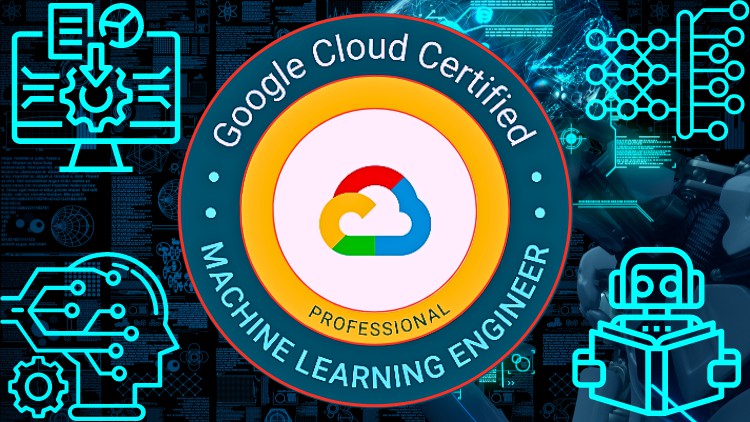News & Events
Google Certified Professional Machine Learning Engineer
- December 15, 2024
- Posted by: admin
- Category: Udemy Coupon

Translate business challenges into ML use cases
Choose the optimal solution (ML vs non-ML, custom vs pre-packaged)
Define how the model output should solve the business problem
Identify data sources (available vs ideal)
Define ML problems (problem type, outcome of predictions, input and output formats)
Define business success criteria (alignment of ML metrics, key results)
Identify risks to ML solutions (assess business impact, ML solution readiness, data readiness)
Design reliable, scalable, and available ML solutions
Choose appropriate ML services and components
Design data exploration/analysis, feature engineering, logging/management, automation, orchestration, monitoring, and serving strategies
Evaluate Google Cloud hardware options (CPU, GPU, TPU, edge devices)
Design architectures that comply with security concerns across sectors
Explore data (visualization, statistical fundamentals, data quality, data constraints)
Build data pipelines (organize and optimize datasets, handle missing data and outliers, prevent data leakage)
Create input features (ensure data pre-processing consistency, encode structured data, manage feature selection, handle class imbalance, use transformations)
Build models (choose framework, interpretability, transfer learning, data augmentation, semi-supervised learning, manage overfitting/underfitting)
Train models (ingest various file types, manage training environments, tune hyperparameters, track training metrics)
Test models (conduct unit tests, compare model performance, leverage Vertex AI for model explainability)
Scale model training and serving (distribute training, scale prediction service)
Design and implement training pipelines (identify components, manage orchestration framework, devise hybrid or multicloud strategies, use TFX components)
Implement serving pipelines (manage serving options, test for target performance, configure schedules)
Track and audit metadata (organize and track experiments, manage model/dataset versioning, understand model/dataset lineage)
Monitor and troubleshoot ML solutions (measure performance, log strategies, establish continuous evaluation metrics)
Tune performance for training and serving in production (optimize input pipeline, employ simplification techniques)
